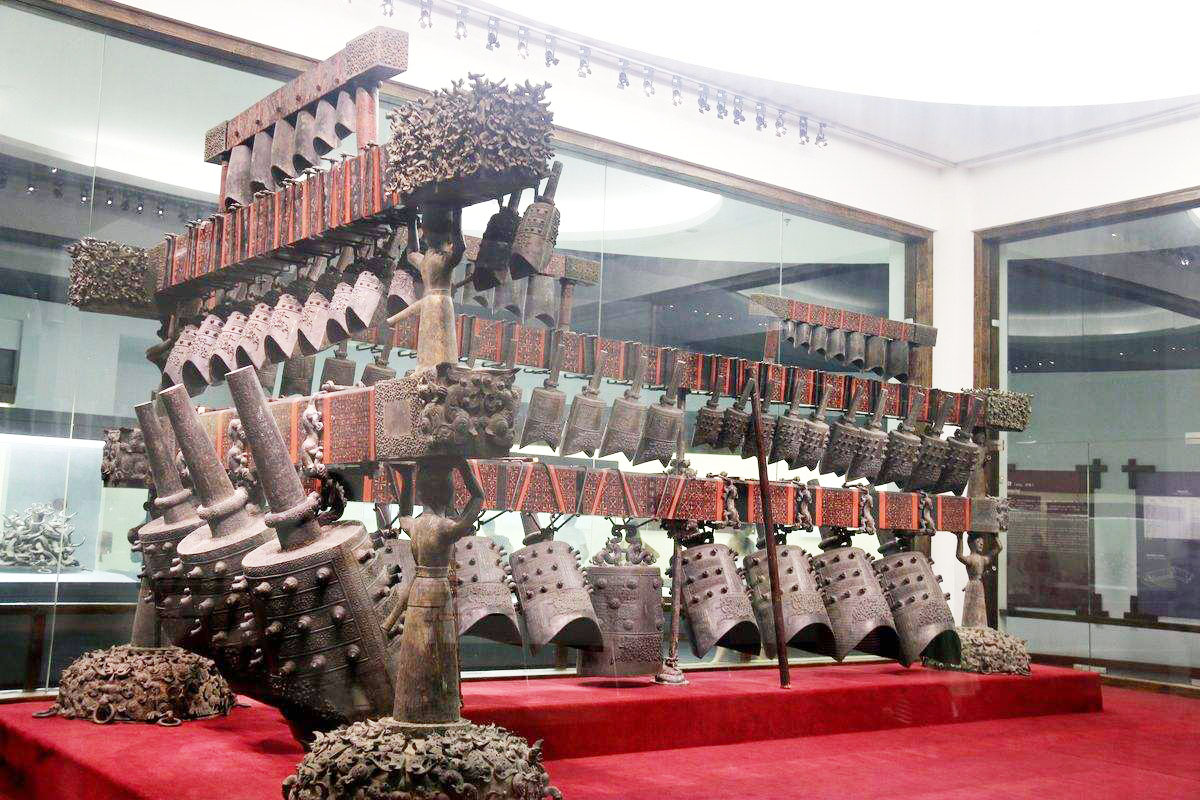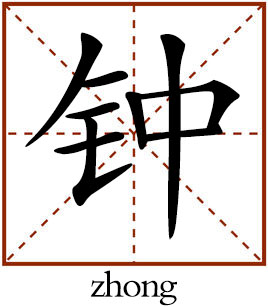The chime bells ring for 2,000 years

The Zenghouyi Chime Bells, also known as Bianzhong of Marquis Yi of Zeng, housed at Hubei Provincial Museum

The Chinese character “zhong” originally refers to the musical instrument “bell.” It also refers to clocks as zhong were used to announce the hour later.
The Zenghouyi Chime Bells, or the Bianzhong of Marquis Yi of Zeng Kingdom, are relics that date back to the early Warring States Period. After being buried for more than 2,000 years, the chime bells were excavated at Sui County, today’s Shuizhou City, central China’s Hubei Province, in 1978. This was a historic discovery in the history of Chinese archaeology, music and metallurgy. A reporter from Chinese Social Sciences Today recently paid a visit to this heritage site.
Wang Xincheng, former head of the heritage management office in the Leigudun area of Suizhou, participated in the excavation work at the tomb of Marquis Yi of Zeng, where the chime bells were found. He told the reporter that since its discovery, the tomb had become an important tourist attraction in the region.
In 1979, work sheds were built to preserve the heritage site and also for management. Right now, the scenic area is being upgraded. Lighting equipment has been installed, and soon 3D projections will be ready to present the original scenes of the tomb.
The tomb was accidently discovered in 1977 by a radar repair station of the Chinese People’s Liberation Army in Sui County, while they were levelling a hill to build a factory at Leigudun, Wang said.
Then in March the following year, archaeologists in Hubei Province went to the site and found a large tomb. An irregular polygon, the tomb has an area of more than 220 square meters.
The excavation of the now world-renowned Zenghouyi chime Bells is still fresh in the memory of Tan Weisi, leader of the team. He still remembers the day, May 25, when the treasure was unveiled after more than a month’s work of removing water drainage and sludge. A magnificent set of instruments consisting of exquisite bronze chime bells was once more brought to light.
After the discovery, many music historians from the Ministry of Culture in Beijing, including Li Chunyi, Wang Xiang and Wu Zhao, went to Sui County successively to investigate the unearthed instruments and test their sound.
In joint efforts with Qiu Xigui and Li Jiahao, paleographers from Peking University, they studied and interpreted the inscriptions on the utensils and musical instruments.
Studies showed that the unique structure and hewa shape, or closed-tile shape, as well as bell walls of uneven thickness enabled the device to produce distinct music. A bell can produce two tones, and the two tones mostly have harmonious three-degree intervals between them, Tan said.
In particular, three layers of the instrument set can produce distinctive respectively sounds yet their ensemble is harmonious.
In order for people to hear the beautiful music rather than see the instrument only, we decided to perform it on stage, Tan said. Being sure that there was no risk of further damaging the instrument and that it was capable of performance, on Aug 1, 1978, after over two thousand years of silence, the device was moved onto a stage, and the world heard its eternal romantic sound for the first time in millennia.
Tan said the Zenghouyi Chime Bells are not only tangible instruments for study, but also provide original sounds that are identical to the way they sounded thousands of years ago. Also, the inscriptions on the bells are valuable material for studying music. Through these relics, we can see the remarkable achievements in music and art of the State of Zeng.
